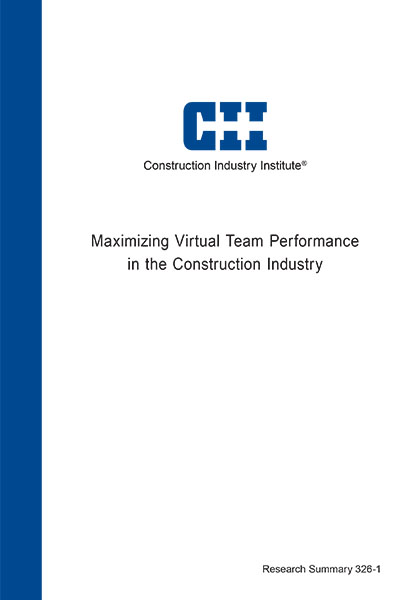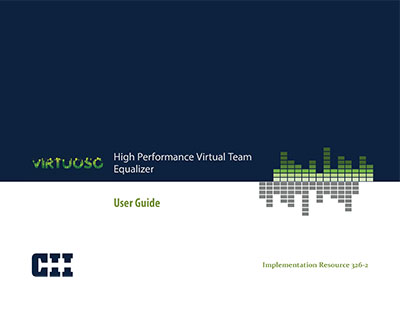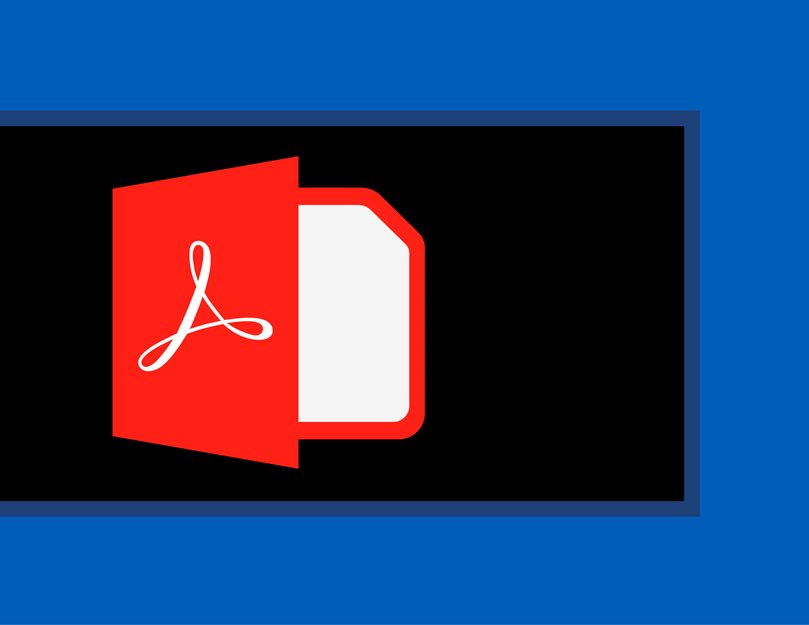
Maximizing Virtual Team Performance in the Construction Industry
Publication No
RS326-1
Type
Research & Development Product
Publication Date
Oct 01, 2016
Pages
19
Research Team
RT-326
DOCUMENT DETAILS
Abstract
Key Findings
Filters & Tags
Abstract
In recognition of the importance of virtual teams to the construction industry, CII created Research Team 326 (RT-326) to examine: “What can the construction industry do to maximize the performance of virtual teams?” The team explored this question by identifying current and emerging virtual team practices, identifying and recommending enhanced work processes, and developing a tool that will help companies improve virtual team performance.
RT-326’s research found a correlation between virtual teams that achieve high performance and the implementation of certain key factors. The team identified 21 of these factors, which it termed Virtual Team Key Performance Indicators (VT KPIs), and grouped them into three categories: Technology, Team, and Process. Weighting provided clarity on which VT KPIs have the highest impact on team performance.
The RT-326 research concluded that successfully using VT KPIs can maximize the performance of a virtual team. Validation surveys found that Technology measures, while necessary for virtual teams, did not have strong associations with performance; however, virtual team performance was strongly correlated to having Team and Process VT KPIs in place. By implementing corresponding KPIs, project teams can overcome barriers characteristic of virtual work, including inadequate hardware, cultural and language differences, uneven participation, and the lack of virtual team procedures.
Project managers can evaluate their virtual teams against the VT KPIs by using Implementation Resource (IR) 326-2, VIRTUOSO: High Performance Virtual Team Equalizer, a Microsoft© Excel-based tool. VIRTUOSO identifies areas that need improvement and offers implementation guidance to enable higher levels of performance. By using this tool, project managers can execute virtual teamwork more effectively. In a business environment where fewer and fewer distributed teams can afford to co-locate or even hold in-person meetings, VIRTUOSO enables the development of adaptive and responsive teams.
Key Findings
RT-326 developed and distributed a survey and analyzed the survey data on virtual team performance in the construction industry. This was followed by conducting several case studies among CII member and non-member companies with further input from virtual team experts in the industry. This resulted in RT-326 identifying 21 virtual team KPIs which were separated broadly into three categories: (RS326-1, p. 9)
- Technology (9 VT KPIs)
- Team (7 VT KPIs)
- Process (5 VT KPIs)
All teams experience barriers and the following barriers were identified as being significant for virtual teams. (RS326-1, p. 12)
- Technology and connectivity issues
- Difficulty reading visual cues
- Leadership requirements
- Team and individual accountability
- Lack of engagement and trust
- Lack of procedures for virtual teaming
The VIRTUOSO Tool (Figure 1) allows users to anticipate the performance level of a virtual team by determining scoring for Technology, Team, and Process categories using a PDRI-based metric on the basis of the VT KPI priority weightings identified in the AHP process. An implementation equalizer allows for comparing VT KPI scores against the maximum possible score and customizing the output implementation guide that the tool produces for improving the virtual team performance for each KPI. (IR326-2, p. 5)
The development of the VIRTUOSO Tool was validated using a survey distributed among project managers of 19 high performing and 17 poor performing virtual teams. It evaluated whether the anticipated performance assessment provided by the VIRTUOSO Tool in Technology, Team, and Process correlated with project performance variations (i.e., baseline, high, and breakthrough performance). The validation survey found that technology measures, while necessary for virtual teams, did not have strong associations with performance. (RR326-11)
Filters & Tags
Knowledge Area
Project Phase
Project Function
Industry Group
Research Topic
Maximizing Virtual Team Performance in the Construction Industry
Keywords
Virtual,
Performance,
Global,
Non-Collocated (multi-site),
Project Management,
Early project planning,
Workshare,
Team,
Process,
Technology,
rt326



